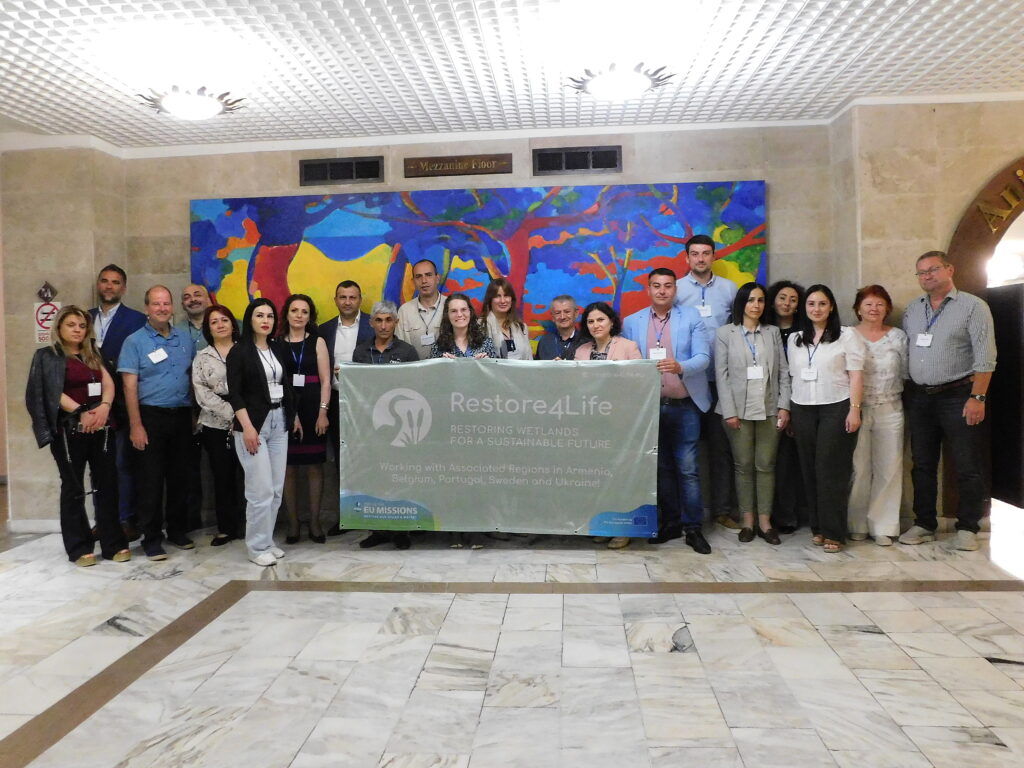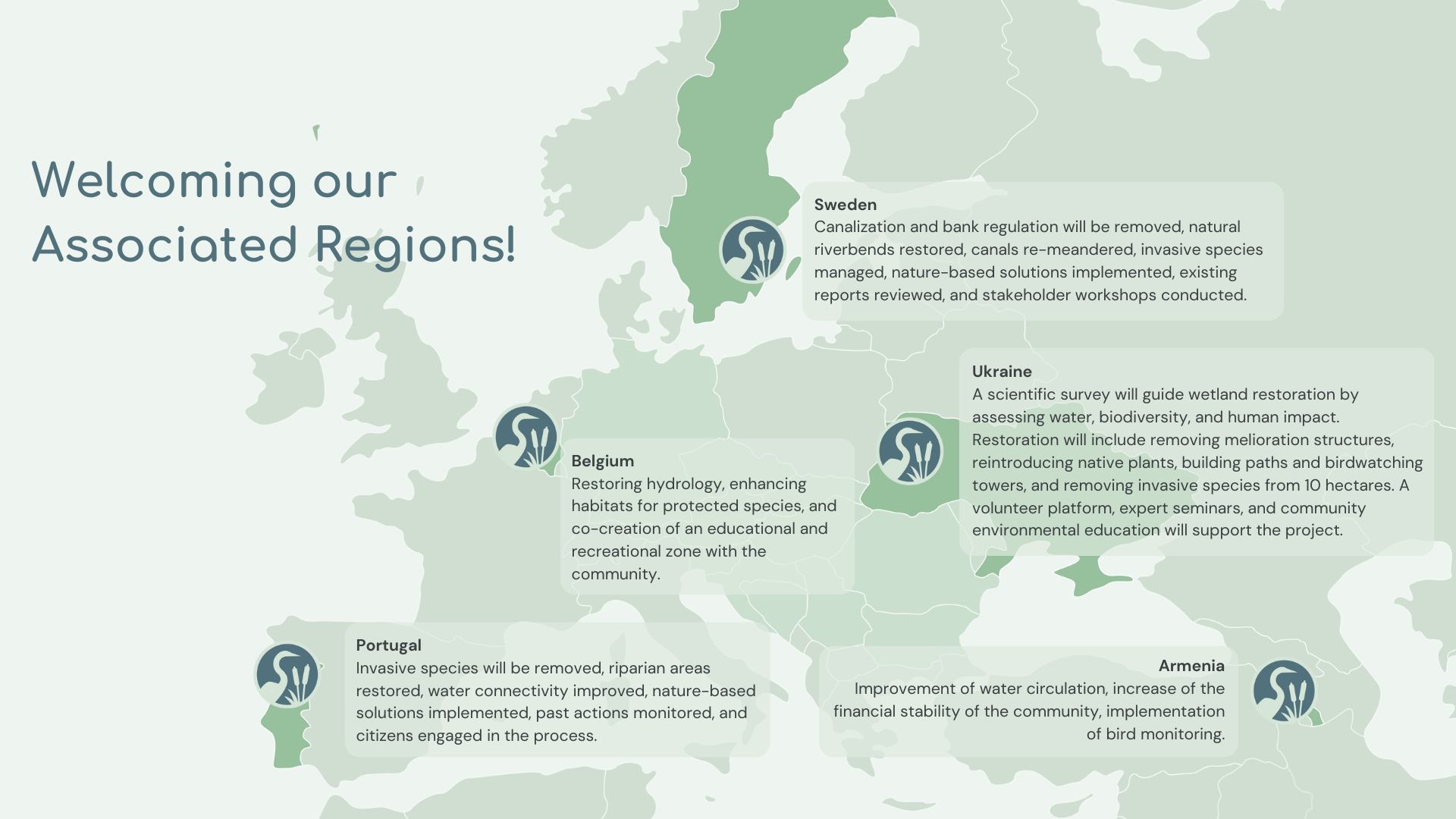
From 2 to 7 June, seven Restore4Life partners visited the associated region of Ararat in southern Armenia to hold a joint workshop and field visit with the Romanian implementation site at Enisala in the Danube delta.
On 3 June, our team had a very enjoyable excursion to the Ararat plain area. We headed out of the city as the sun rose behind the mountains and the cloud cleared except around the peak of Ararat that dominated the southern horizon. The countryside of the Ararat plain is one of irrigated orchards (apricots, peaches, apples, pomegranates) with occasional fields of cereals. Our first stop was at the famous site of Khor Virap. Here, we walked up to a ridge that overlooked a large reedbed where some excavations had been made by a local NGO to produce open water and small islands for more diversity and create a nature reserve. We also went to see the church itself – a shrine to a missionary, Gregory the Illuminator, who had brought Christianity to Armenia. A short drive further on we entered the Armash fish ponds (a legendary place for birdwatchers) where we had a picnic lunch under the shade of a small clump of trees. Then we drove to an embankment on the edge of the ponds and walked part of it to look over the dry pond which was going to be rewetted and have birdwatching hides installed. There we saw nesting black-winged stilts, white-tailed plovers, and collared pratincoles. Beside the site was a full pond where pygmy cormorants, white-headed ducks, common and ferruginous pochards and a host of coots were breeding. It certainly looks to be an exciting and important restoration project.
The workshop took place on 4 June in the Ani Plaza hotel in the centre of Yerevan. Over 20 stakeholders attended the meeting which was opened by the Head of the Environmental Protection Department of Ararat municipality. Wetland expert Karen Aghababyan delivered the keynote presentation on plans to restore a variety of natural wetland habitats in a dry, abandoned fish pond of 100 ha adjacent to the 1,500 ha Armash fish farm. The restored wetland would provide additional breeding and feeding areas for many threatened species of migratory birds. As in previous workshops, we also conducted a PESTLE analysis with the stakeholders to establish the socio-economic circumstances that local enterprises operate under and discussed approaches for formulating a road map for site restoration.
The following two days were occupied by visits to four tourism companies based in Yerevan and a return visit to Armash to interview the fishpond owner. All were keen to develop the nature tourism market, especially as revenues from more conventional heritage tours were declining (following the Covid 19 pandemic) while individual self-organised visits were increasing. Many people were coming to Armenia to hike, kayak and enjoy the wonderful scenery and wildlife.
Finally, but not least, we are most grateful to Karen, Anush and Lilit for the excellent organisation and running of our visit and workshop.

